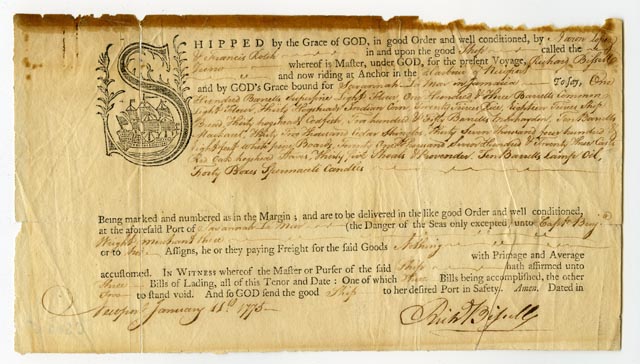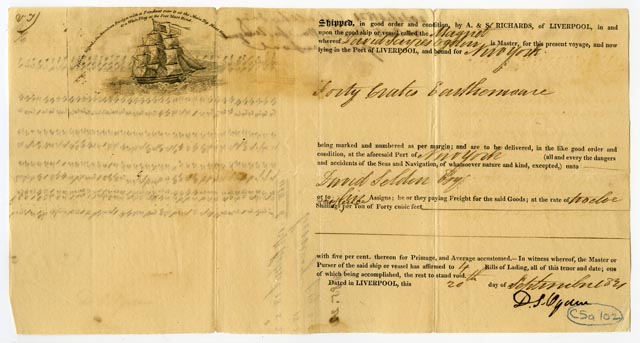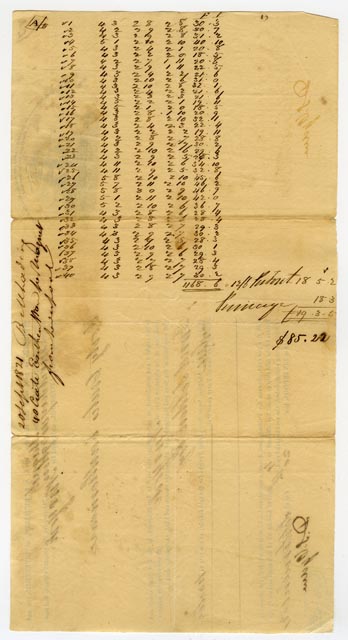I delved into our collection of ships’ papers a couple of weeks ago in search of bills of lading, and more specifically, the descriptions created for the cargo on board. These documents were receipts issued by the ship master after verifying that the cargo was received in good order and condition before he shipped them to their destination.
Our bills of lading that span from the late 18th-20th century are not all identical like the cookie-cutter forms you see today, but they still have several similarities in their content like the names of the consignor and the consignee, a description of the goods with their weight or tonnage, their destination, and the rate of freight.
Although some of the descriptions are extremely brief, 8 boxes of merchandise, others, like the one below, demonstrate the great lengths that were taken to faithfully represent every bit of cargo being transported.

100 barrels superfine light flour
103 barrels common light flour
30 hogs heads
Indian corn
20 Teirces rice
18 Teirces ship bread
Codfish
10 barrels mackrel
32,000 cedar shingles
37,408 whipping boards
21,723 casks red oak hogshead stoves
35 shoats
10 barrels lamp oil
40 boxes spermaceti candles
This other bill of lading for 40 crates of earthenware shipped from Liverpool to New York on the Magnet in September of 1821 features the detailed inventory taken on the back to determine the rate of freight which varies depending on the kind of good.
In order to prevent any dishonest or fraudulent activity as the cargo reached the destined port, bills of lading were usually distributed to the shipper as his receipt, while another is kept by the captain of the vessel, and the last is sent to the consignee.

